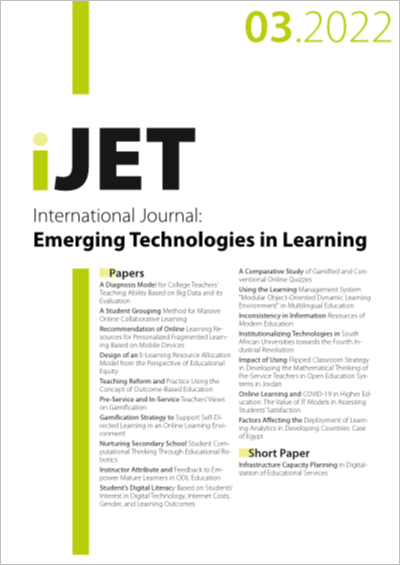Factors Affecting the Deployment of Learning Analytics in Developing Countries: Case of Egypt
DOI:
https://doi.org/10.3991/ijet.v17i03.24405Keywords:
learning analytics, deployment factors, students, developing countriesAbstract
The higher education institutions in developing countries such as Egypt are challenged with the high enrollment student rates, crowded classes, and inability to track the progress of each student individually which increased the demand to find a solution that can redeem those problems. Although the usage of learning analytics is an expanding solution to support different educational challenges from performance tracking to detecting students at risk, learning analytics’ developments concentrated on addressing solutions for developed countries. Accordingly, the discipline still requires a broader and in-depth interpretation of its contextual usage in developing countries, especially Egypt. A research model has been constructed based on literature and tested for its validity and reliability. A questionnaire has been distributed to 148 university students. The study used smart-PLS to interpret and analyze the collected data. The study revealed that organizational culture, data accessibility, trustworthiness, visualization has a positive effect on awareness, while lack of ability has a negative effect on awareness. both infrastructure and awareness have a significant positive effect on learning analytics impact. The research indicates high learning analytics awareness and a high perceived impact on Egyptian higher education. More evidence should be extracted with the collection of more insights from students, faculty members, and decision-makers.
Downloads
Published
How to Cite
Issue
Section
License
Copyright (c) 2022 Mai Mahmoud, Georgios Dafoulas, Rasha Abd ElAziz, Noha Saleeb

This work is licensed under a Creative Commons Attribution 4.0 International License.



